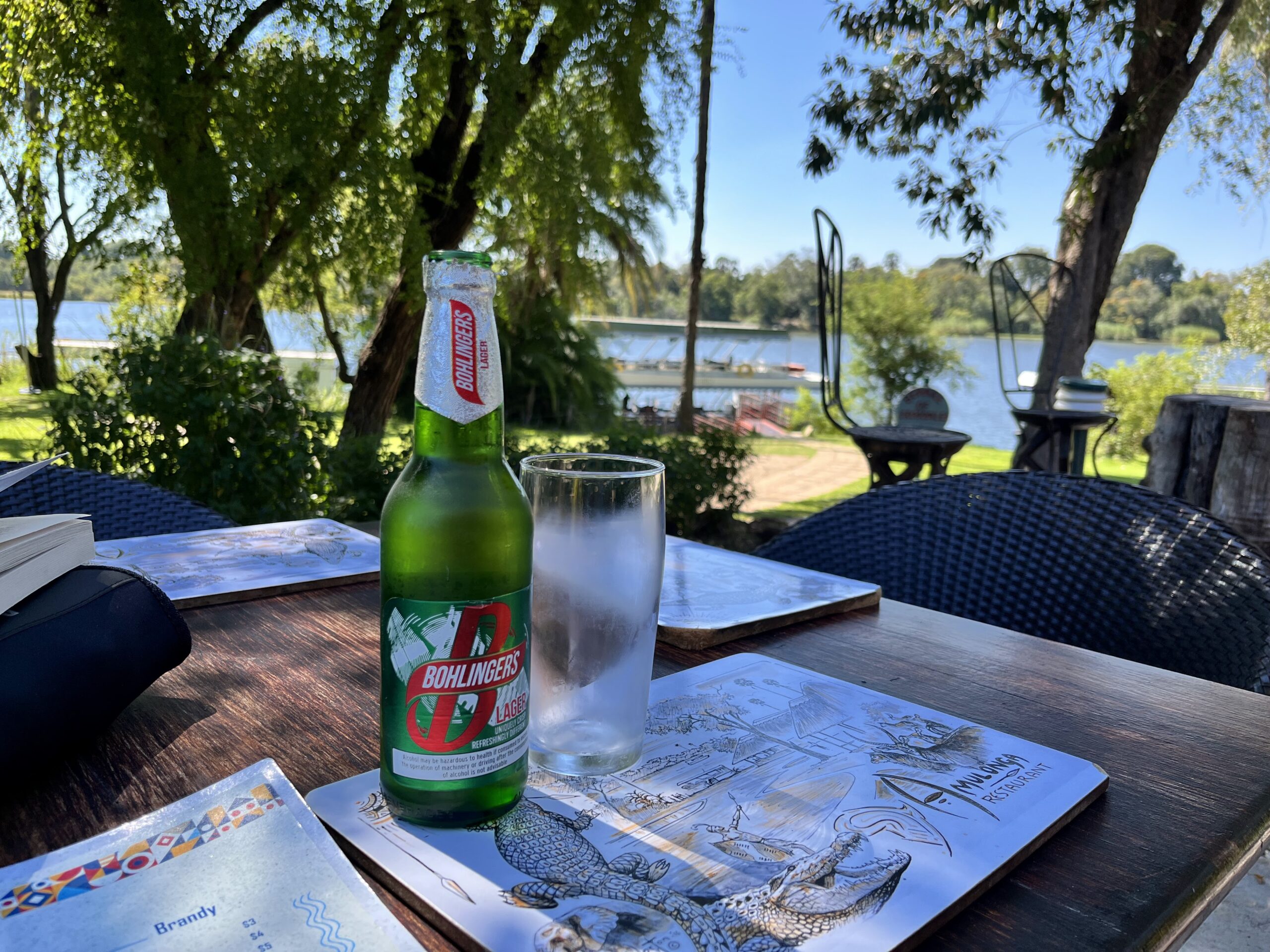Let me set the scene: me, a Bohlingers beer, and Brené Brown. Not at a corporate offsite, not on a vision board workshop in the Winelands, but on the banks of the Zambezi River, mentally frayed, physically fried and emotionally exhausted. I wasn’t on holiday. I was on the verge. The verge of quitting, combusting, or becoming someone I no longer recognised. Spoiler: all three happened.
Corporate life, for all its lanyards and loyalty bonuses, had become a soul-flattening loop. Gym. Work. Home. Sleep. Repeat. I was stuck in a cycle so well-oiled it should have been sponsored by WD-40. And the worst part? I wasn’t half bad at it. Promotions came. Teams grew. Budgets expanded. But the more ‘corporate’ I became, the more it all felt like someone else’s version of my life.
Cue Daring Greatly by Brené Brown. There I was, beer in one hand, life-altering prose in the other, and a very smug hippo judging me from the waterline. That’s when it hit me: sustainability – the thing I had obsessed over having had the luxury of studying with the Cambridge Institute for Sustainability – it isn’t just for businesses and ecosystems. It’s for people too. And I wasn’t living it. Not even close.
So I quit. No job lined up. No tidy LinkedIn announcement. Just me, a growing list of hopeful job interviews, and the slow realisation that I could recite every buzzword in the dictionary but couldn’t stomach doing the same dance again. I even got to the finish line a couple of times – you know, final round, documents being sent, champagne nearly popped – only to hear that nagging voice whisper: “It’s just more of the same, it’s going to eat you alive again” And you know what? It was right.
See, when it starts to feel like more of the same, that’s not growth. That’s comfortable. That’s lying on a soft pillow of predictability so fluffy you want to swan dive off the nearest high-rise just to feel something. Comfortable is the enemy of sustainable.
Real sustainability – the kind that endures, evolves, elevates – only shows up when you commit to grit. To direction. And truthfully, I’ve battled with that part for years. I didn’t know what I wanted. (Still don’t, some days.) But then came the glimmer: when you suspect you might know… that’s your sign. That’s when you throw everything at it.
And yes, cue the motivational LinkedIn quotes: “What if I fail?” “But oh my darling, what if you fly?” Spare me. Except don’t. Because sometimes the cheesy stuff is true.
My voice – the one I had buried under marketing dashboards and campaign decks – began piecing itself back together. I realised I wasn’t frustrated by marketing because it was marketing. I was frustrated because it lived in silos. And I don’t. I think in systems. I care about people. I obsess over process. Organisations, to me, are living, breathing organisms – just like us. And they deserve better than bandaid strategies and corporate jargon.
So I stepped out of the weeds. Out of the boxes. Out of the comfortably numb routine. And into a space where real change could happen. Not just for businesses, but for the people inside them. Because here’s the kicker: when you elevate the people, you elevate the business. Every time.
And sometimes, when you help people grow, they leave. They have their own Bohlingers Moment and move on. And you should be thrilled. Stay connected – they might add more value out there than they ever could in here.
In No Rules Rules, Reed Hastings introduces the “Keeper Test” at Netflix: managers ask themselves, “Would I fight to keep this person if they were leaving?” If the answer is no, they’re let go – with kindness and a healthy exit package. Harsh? Maybe. Honest? Absolutely. Imagine if we all asked ourselves the same thing: “Would I fight to keep me here?”
If the answer is no, maybe it’s time to face the fear. The anxiety. The awkward crying into your fourth glass of red (my recommendation, a Kanonkop Kadet Cape Red Blend). Because on the other side of that is where your real work begins. The work that lights you up. The space you were actually built to play in.
That’s not just change. That’s resilience. That’s growth. And that’s how we got here.

One response
[…] where this story begins, on the banks of the Zambezi, holding a cold Bohlingers Lager, having a come-to-Jesus moment. It wasn’t that I hated hard work; I was just tired of how hard it was to move even an inch once […]